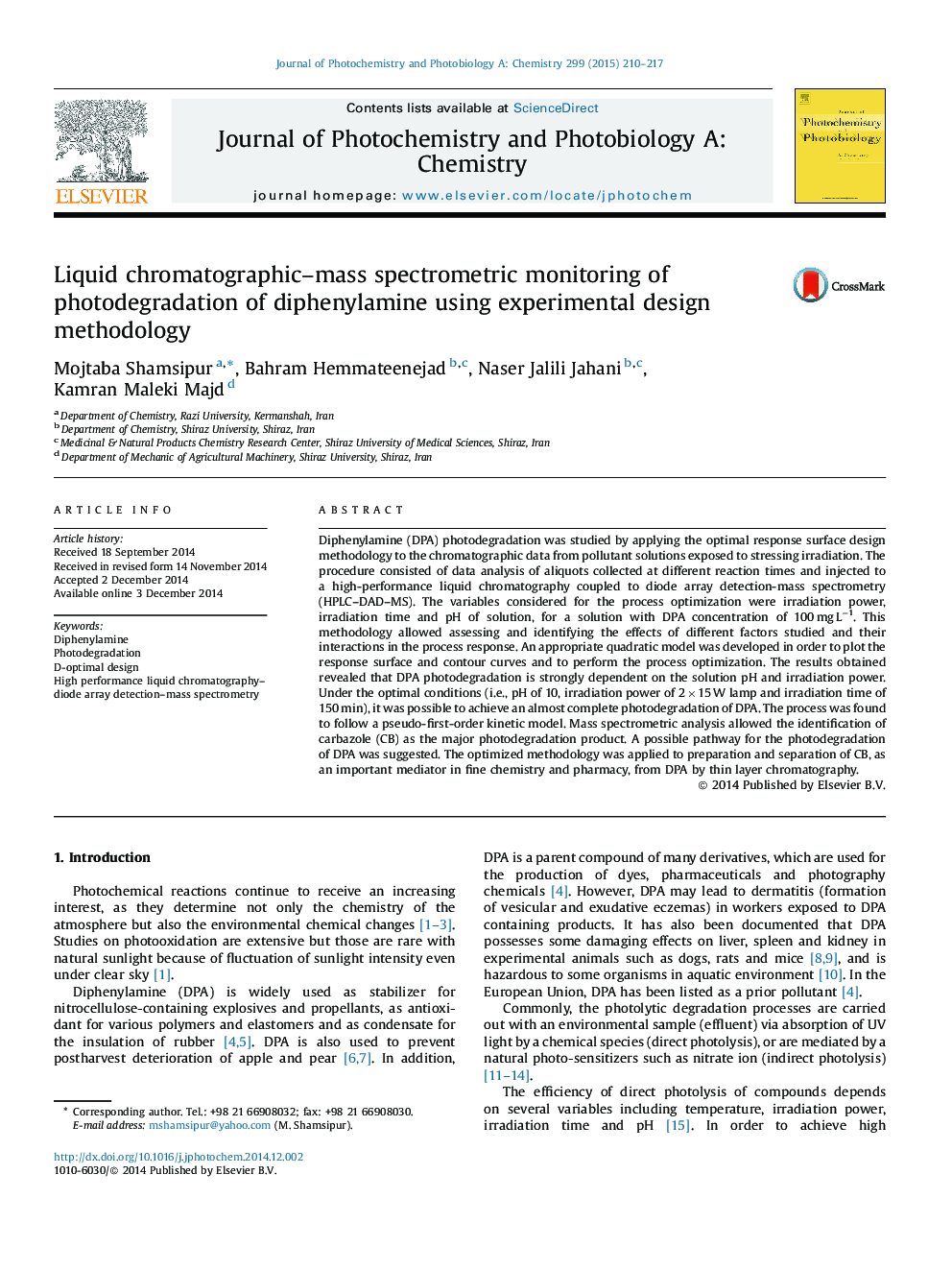| کد مقاله | کد نشریه | سال انتشار | مقاله انگلیسی | نسخه تمام متن |
|---|---|---|---|---|
| 26414 | 43950 | 2015 | 8 صفحه PDF | دانلود رایگان |
• Chromatographic monitoring of photodegradation of phenylamine, via HPLC–DAD–MS.
• Application of optimal response surface design methodology to the chromatographic data.
• Considering the irradiation power and time and pH of solution as variables for process optimization.
• Establishing of a pseudo-first-order kinetic model for photodegradation process.
• Mass spectrometric identification of carbazole as the major photodegradation product.
Diphenylamine (DPA) photodegradation was studied by applying the optimal response surface design methodology to the chromatographic data from pollutant solutions exposed to stressing irradiation. The procedure consisted of data analysis of aliquots collected at different reaction times and injected to a high-performance liquid chromatography coupled to diode array detection-mass spectrometry (HPLC–DAD–MS). The variables considered for the process optimization were irradiation power, irradiation time and pH of solution, for a solution with DPA concentration of 100 mg L−1. This methodology allowed assessing and identifying the effects of different factors studied and their interactions in the process response. An appropriate quadratic model was developed in order to plot the response surface and contour curves and to perform the process optimization. The results obtained revealed that DPA photodegradation is strongly dependent on the solution pH and irradiation power. Under the optimal conditions (i.e., pH of 10, irradiation power of 2 × 15 W lamp and irradiation time of 150 min), it was possible to achieve an almost complete photodegradation of DPA. The process was found to follow a pseudo-first-order kinetic model. Mass spectrometric analysis allowed the identification of carbazole (CB) as the major photodegradation product. A possible pathway for the photodegradation of DPA was suggested. The optimized methodology was applied to preparation and separation of CB, as an important mediator in fine chemistry and pharmacy, from DPA by thin layer chromatography.
Figure optionsDownload as PowerPoint slide
Journal: Journal of Photochemistry and Photobiology A: Chemistry - Volume 299, 15 February 2015, Pages 210–217
